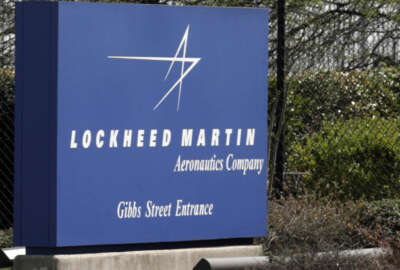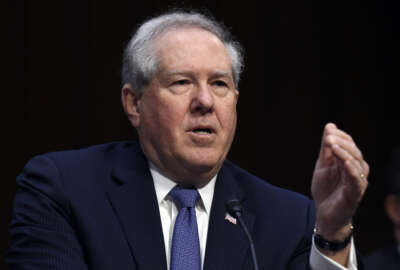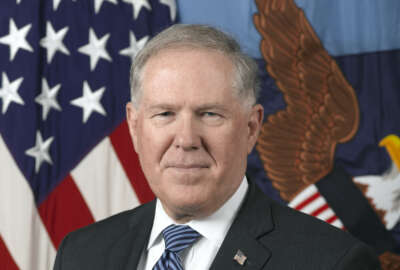
Industry confused over DoD’s research rule
DoD's proposed rule on independent research and development left more questions than answers for industry.
Industry seems resistant and confused about the Defense Department’s proposed rule to gather more information from companies about the money provided to them for government research projects.
Last month, DoD released a proposed rule that would require companies competing for a contract to detail the nature and value of prospective independent research and development (IR&D) projects the company would use to fulfill the contract. DoD would then use that information for evaluation purposes.
But during a March 3 town hall meeting in Washington to discuss the rule change, both industry and government seemed confused about what the rule would do and how it would be enforced.
Currently the Pentagon funds defense companies for the research and development they do since some of the products those companies create only have one consumer: the government. At times those products never translate into products that can be put on the market for private consumption.
“There is a process that is laid out in the law that basically provides for independence on the companies’ side for picking the types of things that they — based on their strategic planning and forecasting — whatever they think will be useful,” said Jon Etherton, president of Etherton and Associates.
DoD has said previously in its Better Buying Power reforms and again during the town hall that it doesn’t want industry to use public funds for near-term goals like reducing the price on a competitive item, instead of creating intellectual property. The Pentagon said there was a disconnect between what the government was expecting and what industry was providing.
Industry seemed to balk at the rule during presentations at the town hall.
Ron Youngs, assistant vice president of acquisition policy at the Aerospace Industry Association, said he thought the rule change could be better handled within the program offices and there was no need to add extra regulations to defense companies.
Youngs brought up a number of concerns about the rule. How will contract IR&D be evaluated? Will there be consistently used, publicly available evaluation criteria, or will contracts be individually evaluated?
John Panetta from Raytheon said he felt the rule conflicted with the tenets of Better Buying Power, in that adding more regulations would drive behavior in which contractors will not push the envelope but will work with proven technologies.
The Better Buying Power reforms try to foster innovation by making the acquisition cycle more manageable.
Still, the main concern from industry is it just wasn’t sure what DoD is trying accomplish with the rule. Since the rule is in its nascent stages, the town hall acted as more of a brainstorming session than a discussion on the rule.
Melissa Flagg, deputy assistant defense secretary for research, said there is a perceived problem that companies are focused on short-term technologies that will not foster the innovation in the long term.
Flagg said DoD would like to see more of a mixed investment portfolio than one focused on short-term competition.
At the same time, industry advocates said they were confused as to whether DoD had the numbers to back up its suspicions.
“We may have a situation where some of the anecdotes have worked their way to becoming data. That’s really one of the questions. As everybody indicated here, especially from the audience, is let’s really be very careful and very clear about defining what the problem is. Based on whatever information we know, then there can be a real discussion. If we all agree this is a problem then we can come up with solutions, which may be very different from what is proposed in the advanced rule,” Etherton said.
Some experts think industry takes advantage of DoD’s subsidies to companies for IR&D.
“It seems to me that what [is spent out of IR&D funding] in the name of research … is relatively small,” Subrata Ghoshroy, a former senior defense analyst at the Government Accountability Office, told Federal News Radio. “The science and technology is an area in my opinion where actual scientific research takes place. The rest of the budget is not really doing that much research… it is an area where the corporations tend to make a lot more money by building prototypes and often they don’t go anywhere.”
In a 2011 article in the Bulletin of Atomic Scientists, Ghoshroy wrote “congressional military committees have for years grossly abused the Defense R&D budget, using it to channel money to contractors in their districts via the earmarking process.”
Frank Kendall, DoD’s undersecretary for acquisition, technology and logistics, spoke in September about what he is looking for in the changes.
“What I am looking for… is that there is some meaningful technical content in the award that’s been put out, that’s really the fundamental point. Requiring industry to tell government what it’s doing will encourage more meaningful content,” Kendall said.
DoD said it is interested in continuing its dialogue with industry about the rule and that the rule is in its very early stages.
Copyright © 2025 Federal News Network. All rights reserved. This website is not intended for users located within the European Economic Area.
Scott Maucione is a defense reporter for Federal News Network and reports on human capital, workforce and the Defense Department at-large.
Follow @smaucioneWFED





